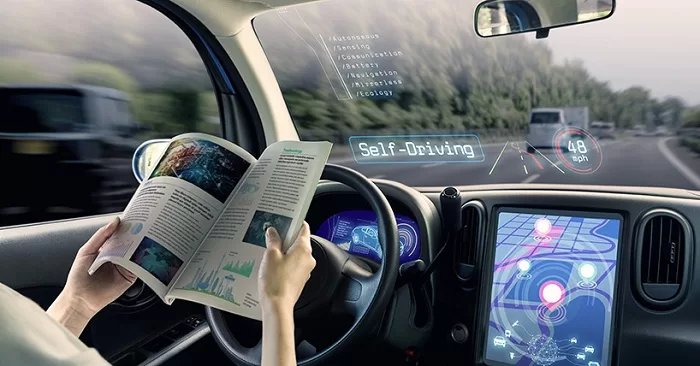Gender Affects Driverless Car Performance

Newcastle University research has shown that women respond quicker and exhibit more stable takeover control than men in automated cars.
The study focussed on level 3 automated vehicles (L3 AVs), which allow drivers to be completely disengaged from driving and perform non-driving related activities. However, in L3 AVs human drivers’ intervention in the control of the vehicle may still be required in some situations, such as no signal or network connections, and places without complete road signage and markings.
The driving simulator study involved 76 drivers (33 females and 43 males), who were asked to take over control from L3 AVs in different weather conditions, with researchers measuring the timing and quality of takeover.
Published in the journal Nature Scientific Reports, the results show that gender significantly affects takeover performance. Compared to men, women exhibited a smaller percentage of hasty takeovers and slightly faster reaction times as well as slightly more stable operation of the steering wheel.
Understanding autonomous vehicles
Study Lead Author, Dr Shuo Li, of Newcastle University’s School of Engineering, said: “Our research strengthens the importance of tackling inequality in the context of future mobility. To create user-friendly automated vehicles, the manufacturers and designers need to adopt inclusive practices which fully consider the needs, requirements, performance, and preferences of end-users from different demographic groups.
“The next step, follow-up research is planned to explore gender differences in the needs and requirements associated with non-driving related tasks in Level 3 automated vehicles and investigate the effect of performing these tasks on end-users’ behaviour and performance.”
Study Co-Author, Professor Phil Blythe, Professor of Intelligent Transport Systems at Newcastle University’s School of Engineering, added: “This research is part of a wider programme of work which is helping us understand the issue and challenges of designing automated vehicles in a way that end users will be able to understand and use safely.”
The findings of this paper have important implications for policymakers, the vehicle manufacturers and academics for designing and facilitating user-friendly human–machine interactions in L3 AV.
The results also highlight that it is important for both genders to recognise they can use and interact with L3 AVs well, however more hands-on experience and teaching sessions could be provided to deepen their understanding of L3 Avs particularly at the point when the driver is required to retake manual control of the vehicle.
The researchers argue that design of the car interiors of L3 AVs should also take into account gender differences in the preferences of users for different non-driving related tasks, however the overriding requirement is to keep the required user interface and take-over tasks as simple as possible with a standard way of doing this irrespective of vehicle model.
Source: Newcastle University















